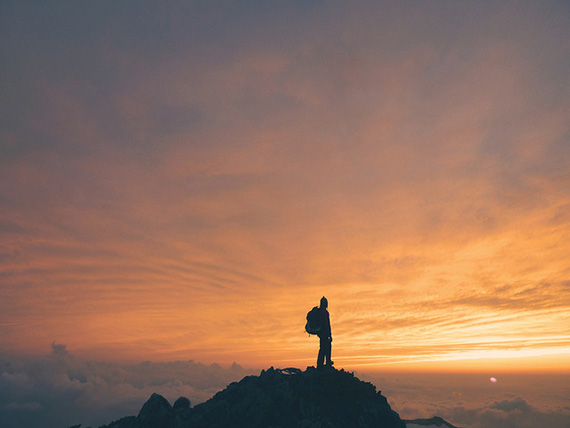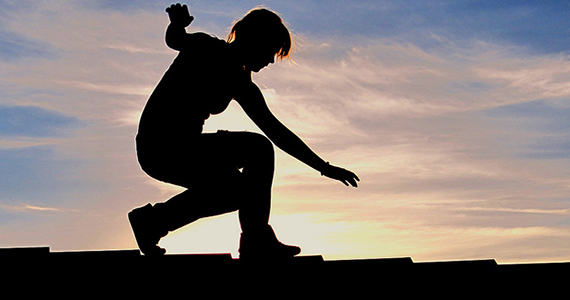Normally when you take a photo, you want the subject to be as crisp and clear as possible. However, today, we’ll talk about a technique that hides almost everything from the viewer, leaving it all to the imagination and delivering a stunning effect at the same time.

photo by Tim Dutton
Silhouettes are used by artists and professionals to convey drama and emotion in a simple yet striking manner. Here’s a quick rundown on how you can create magical silhouettes with your camera in automatic or semi-automatic modes.
1. Look at your light source(s)
Typically, when you take a photo, there are two sources of light: the natural, ambient light and the light of your flash.

photo by postscapes
The first thing you need to do to get a silhouette is turn off your camera’s flash. That way, you’ll heighten the contrast of the subject and ensure that the subject comes out as dark as possible.
The second thing to do is to identify the sources of ambient light. Silhouettes come out best when there is only one source of light (e.g., sunlight) against which you can place your subject. If there are multiple sources of light, try to shut down some of them or choose the brightest one for maximum effect.
2. Compose your image
Create a mental picture of what you want to shoot. The magic of silhouettes is all in the shapes you create, so think about whether you want to capture dancers, a romantic love scene, or something else. This, of course, depends to some extent on your subject, too.
Once you have a mental picture, place your subject in front of the light source and get the shape you want. If you’re unsure of what you want, just try out some forms and see what you like. If you’re taking the silhouette of a person, try to experiment with the positioning of their hands or features of the face. Remember, it’s a silhouette so you’ve got to express it with the boundary of the object.

photo by Emil Pakarklis
3. Fool your camera
Now this is the tricky part. Most cameras today are extremely intelligent—so intelligent that as photographers we need to fool them sometimes to get what we need. To understand this bit, we need to get into metering the photo.
Metering is the way in which a camera determines how to expose the photo. Remember, a camera can’t see colors, it can only sense the intensity of light. So when you point it at a scene, it sees shades of gray, finds the middle shade in the scene, and sets the exposure accordingly.

photo by Alexis Nyal
This effectively means that if you’re shooting a dark subject, the camera will figure it out and will increase the exposure to compensate. Now that’s not what we wanted, is it? The way out is to point the camera at the brightest patch in the scene and half press the shutter button (this is when it meters, so we’re making the camera feel that the scene is really bright) and then move the camera to the desired scene while holding the shutter button half down.
When the desired composition is achieved, press the shutter button completely to capture the photo. That’s pretty much it. You now have a great silhouette shot.
About the Author:
Pranav Bhasin is an avid photographer and provides photography learning tutorials on his blog (lifeblob dot com). He also likes to interact with and help amateur photographers.
Like This Article?
Don't Miss The Next One!
Join over 100,000 photographers of all experience levels who receive our free photography tips and articles to stay current:






I’ve used Cameta Camera for both of our cameras. I’ve really been happy with the service they provide. Also check out Adorama.
Where can i get a real good camera thats affordable. I am a big fan of photography and my life long dream is to be a photographer and a dancer. I recently broke my camera because some water got on the camera and the picture is ALL blurry and i would love to get a really good and/but affordable camera that really good photographers use. Please reply.